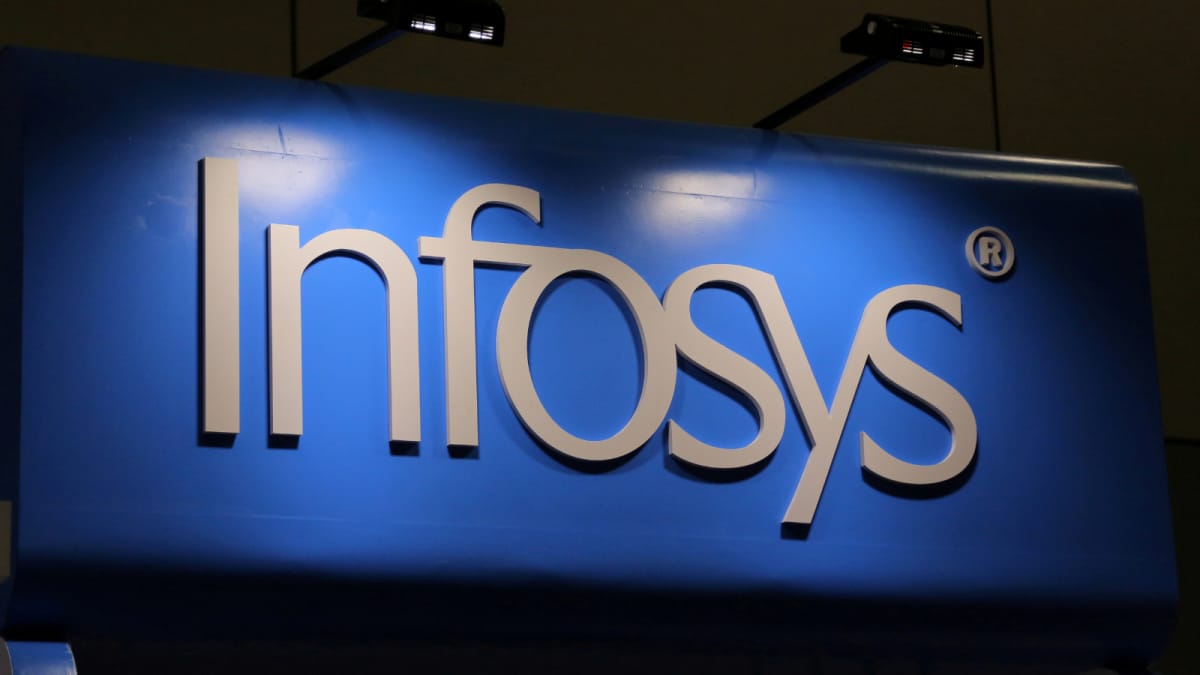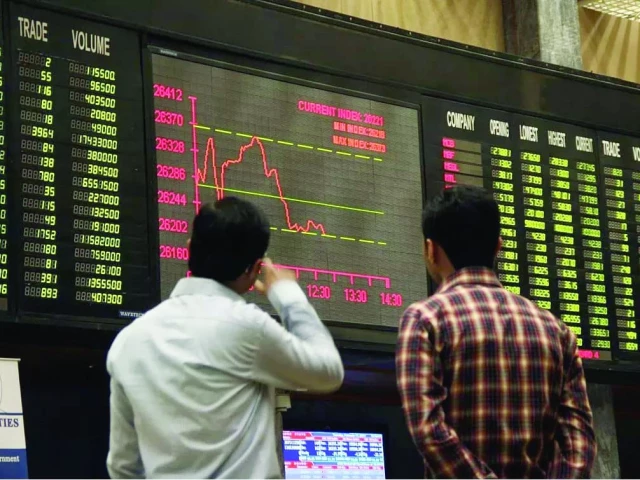Business
Will TCS Follow Infosys’ Lead With Buyback? 5 Crucial Factors Every Investor Must Watch

New Delhi: Infosys has announced a massive Rs 18,000 crore share buyback, the largest in its history. This move aims to support the company’s stock performance amid weak growth in the IT sector. The announcement has sparked speculation that other tech giants, such as TCS, might follow with their own buybacks.
Expert Cautions on TCS Buyback Speculation
Siddhartha Khemka, Head of Research at Motilal Oswal Financial Services, noted that while Infosys’ buyback positively impacts the IT sector, it doesn’t guarantee that TCS will announce a buyback. Market expectations exist, but a TCS buyback is not certain.
CLSA Weighs in on TCS Buyback Prospects
Following Infosys’ announcement, brokerage CLSA suggested that TCS may consider a buyback, possibly a tender offer worth around Rs 20,000 crore, rather than a large dividend payout, possibly in Q3.
TCS Buyback History
TCS has completed five buybacks since 2017:
2017, 2018, and 2020: Rs 16,000 crore each (shares bought at Rs 2,850-3,000)
Post-COVID buybacks in 2022 (Rs 18,000 crore) and 2023 (Rs 17,000 crore)
In total, TCS has spent about Rs 83,000 crore on share buybacks so far.
Management’s Motive for Buybacks
Buybacks typically signal management confidence in the business fundamentals and help boost investor trust. Khemka remarked that while TCS has a strong history of buybacks and dividends, the company might announce a new buyback following Infosys’ lead, but this remains uncertain.
TCS Growth Outlook for FY26
TCS revenue is expected to slow down in FY26 compared to FY25. The company reported a 3.3 percent quarter-on-quarter revenue decline in Q1 and a year-on-year decline as well. North America and Europe, key markets for TCS, showed reduced revenue, though there was some sequential recovery due to currency factors. Challenges in discretionary spending and sector-specific impacts from new tariffs and geopolitical tensions have pressured revenues, especially in BFSI and energy sectors. Brokerages anticipate recovery only from FY27 onwards, factoring in margin pressures from new deals such as BSNL.
Strong Order Pipeline and AI Focus
Despite near-term revenue challenges, TCS started FY26 with a robust order pipeline worth USD 9.4 billion, up 13.2 percent year-on-year. The company highlights “Agentic AI” as a key theme in client interactions and expects international revenue in FY26 to surpass FY25 levels.
TCS Share Performance
TCS shares have gained nearly 3 percent in the past week, rebounding from a steep 9 percent decline over the last three months. However, the stock remains down 30 percent in the past year and 23 percent year-to-date in 2025, reflecting broader sector pressures.
Business
Tariff row: GTRI’s 3-step plan for India to protect its interests; key remarks on Russian oil – The Times of India

Global Trade Research Initiative (GTRI) has proposed a three-step strategy to safeguard India’s trade interests as discussions with the United States have stepped into the “advanced stage.” The agency has suggested measures like scaling back Russian oil imports, seeking trade parity and resuming talks on fair terms.
Here’s what GTRI’s 3 step plan says:
1. Halting Russian oil imports under sanctions
According to the think tank, the first move should be to stop importing oil from Russian companies currently under US sanctions, specifically Rosneft and Lukoil, which together account for 57% of Russia’s crude output. GTRI said that continuing to source crude from these firms exposes India to potential secondary sanctions that could extend and affect critical infrastructure. The note cautioned that more secondary sanctions might be far more damaging than tariffs, as they could disrupt SWIFT access, dollar payments and essential digital systems, potentially paralysing operations across refineries, ports and banks.
2. Removal of additional tariffs
Once such imports are halted, the advisory body recommends India to “press Washington to withdraw the punitive 25% “Russian oil” tariff.” Scrapping the tariff would cut India’s duty burden in the US by half, from 50% to 25%, and improve export competitiveness.These additional duties were introduced on July 31 which the US called a “Russian oil” tariff, accusing India of fueling Moscow’s war machine. Since then, India’s overall duty burden in the US market has climbed to 50%, coinciding with a noticeable drop in exports, down 37% between May and September.
3. Starting on fair terms
Only after tariffs return to normal levels, GTRI suggested to “restart trade negotiations…only on fair, balanced terms.”The organisation said India should push for tariff parity with its other major trade partners by targeting average duties of roughly 15% and securing duty-free access for priority sectors such as textiles, gems and jewellery, and pharmaceuticals.Commerce minister Piyush Goyal has signalled progress on a bilateral trade agreement with the United States, saying that the negotiations have reached an “advanced stage”. The development aligns with US President Donald Trump’s recent hint that a deal with India may be imminent.According to a TOI report, the proposed trade agreement could bring down US tariffs on Indian exports from 50% to 15%. In return, India is expected to scale back purchases of Russian oil and increase energy imports from the United States, along with fulfilling other commitments.
Business
‘Supply chain reliability’: Not Ukraine, Russia is now top sunflower oil supplier to India; how it happened – The Times of India

Even as Moscow’s crude dominates headlines, it’s not the only Russian oil flowing into India. Russia has now surpassed Ukraine to become India’s biggest supplier of sunflower oil, with shipments soaring twelvefold over the past four years, according to industry data cited by ET.
“Russia is the largest and most reliable source of sunflower oil in the world. We get advantage of supply chain reliability,” Sanjeev Asthana, CEO of Patanjali Foods and president of the Solvent Extractors’ Association of India (SEA) told ET.Back in 2021, Russian sunflower oil made up only around 10% of India’s total sunflower oil imports. By 2024, that share had jumped to 56%. India purchased 2.09 million tonnes of sunflower oil from Russia in the calendar year 2024, compared to just 175,000 tonnes in 2021.
How did the shift happen?
Before the war, Ukraine was India’s main supplier of sunflower oil, shipping nearly 90% of its agricultural exports through seaports. However, once the conflict began, Ukraine redirected most of its sunflower oil to European countries via road and rail after its access to Black Sea ports was blocked. Industry officials said this rerouting made shipments to India costlier and less predictable.Russia, meanwhile, continued exporting comfortably through its seaports, giving Indian buyers a more stable and assured supply route. “They were offering us competitive rates, which is the requirement of the Indian market,” said Sandip Bajoria, president of the International Association of Sunflower Oil.Exchanges between industry delegations from both countries in recent months have further strengthened the trade link.
India’s reliance on foreign oils
Sunflower oil is among India’s top three edible oils, yet less than 5% of what the country consumes is grown domestically. The country relies on imports to meet almost 60% of its cooking oil needs. Palm oil accounts for nearly half of that, followed by soyabean oil and sunflower oil. Farmers in the country scaled back sunflower cultivation in the 1990s, after cheaper imported oils began entering the market.Sunflower oil became popular once again in 2023 and 2024, when for the first time it became cheaper than palm oil, according to industry officials, cited by ET. The new pricing advantage helped Russian shipments narrow the market gap between sunflower oil and soyabean oil. “The share of sunflower oil was a distant third after soyabean oil. The Russian supplies have reduced this gap significantly,” Bajoria said.This turnaround may not hold through the year. Sunflower oil imports are expected to decline by about 13% because of a sharp price rise. “The overall imports of sunflower oil will decline this year as there is a premium of $150 per tonne on sunflower oil over the palm oil and soyabean oil,” Bajoria added. “However, the share of Russia will remain the same at around 55-60%.”In September, a delegation from SEA travelled to Russia to explore deeper trade cooperation.
Business
Petrol Price Hiked by Rs2.43, Now Rs265.45 Per Litre – SUCH TV

The government has increased petrol prices by Rs2.43 per litre for the next fortnight, effective November 1, following recommendations from the Oil and Gas Regulatory Authority (OGRA) and relevant ministries.
According to a notification from the Finance Division, petrol will now be priced at Rs265.45 per litre for the next 15 days.
High-speed diesel (HSD) has also been revised upwards by Rs3.02, reaching Rs278.44 per litre, reflecting adjustments suggested by the concerned ministries.
Meanwhile, sources confirmed that kerosene rose by Rs3.34 to Rs185.05 per litre, and light diesel oil (LDO) increased by Rs1.22, bringing its price to Rs163.98 per litre.
Earlier, The News had reported that petroleum prices were expected to rise by up to Rs2.34 per litre for the fortnight due to fluctuations in global oil markets and the impact of recent US sanctions on major Russian producers.
Preliminary calculations for the first 12 days of the pricing cycle had suggested a smaller increase: petrol by Rs1.48 per litre and HSD by Rs1.38. Kerosene was expected to rise by Rs2.34, while LDO could increase by Re0.49.
Earlier this month, in line with international fuel market trends, the federal government had reduced petrol prices by Rs5.66 per litre, bringing petrol down to Rs263.02 per litre for the preceding fortnight.
The price of high-speed diesel (HSD) was also reduced by Rs1.39 to Rs275.41 per litre.
Similarly, the price of kerosene oil was cut by Rs3.26 to Rs181.71 per litre.
The government had set the price of light diesel oil at Rs162.76 per litre for the fortnight.
Petrol is mainly used in private transportation, small vehicles, rickshaws, and two-wheelers.
Higher fuel prices significantly impact the budgets of the members of the middle and lower-middle classes, who primarily consume petrol for commuting.
On the other hand, a significant portion of the transport sector relies on high-speed diesel.
Its price is considered inflationary since it is predominantly used in heavy goods transport vehicles, trucks, buses, trains, and agricultural machinery such as tractors, tube wells, and threshers.
The consumption of high-speed diesel particularly contributes to the increased prices of vegetables and other food items.
-

 Politics1 week ago
Politics1 week agoTrump slams ‘dirty’ Canada despite withdrawal of Reagan ad
-

 Tech1 week ago
Tech1 week agoDefect passivation strategy sets new performance benchmark for Sb₂S₃ solar cells
-

 Business1 week ago
Business1 week agoJLR shutdown after cyber hack drives slump in UK car production
-

 Tech1 week ago
Tech1 week agoTurning pollution into clean fuel with stable methane production from carbon dioxide
-

 Sports1 week ago
Sports1 week agoAlleged mob ties in NBA scandal recall La Cosa Nostra’s long shadow over sports
-

 Business1 week ago
Business1 week agoAssaults on rail network more than triple in 10 years
-

 Business1 week ago
Business1 week ago47.7% of Mutual Fund Assets Now Invested Directly, ICRA Analytics Says
-

 Sports1 week ago
Sports1 week agoNBA legend Chauncey Billups, Heat’s Terry Rozier arrested as part of FBI gambling probe












